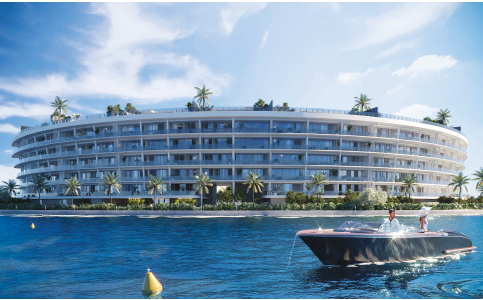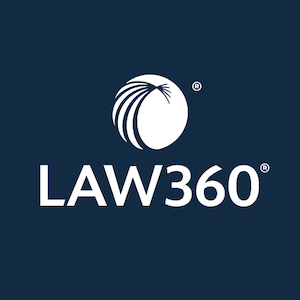Albert Reichmann, development mogul who aided Jewish causes, dies at 93
These were the parallel worlds of Mr. Reichmann, a fiercely publicity-shy mogul who helped build landmark sites — including Canary Wharf and Manhattan’s former World Financial Center. At the same time, he used his fortune and clout as a behind-the-scenes envoy to aid Jewish causes, including bringing dozens of dissidents and emigres to the West during the Soviet era.
But Mr. Reichmann and the family-run empire based in Toronto also made missteps and overreach that put it all in jeopardy. In 1992, their firm, Olympia & York, declared bankruptcy with an estimated $19 billion in debt: too much property, too many vacancies and, as some critics said, too much hubris during the highflying 1980s.
“Every developer goes broke at least once in a lifetime,” Albert Reichmann, who died Dec. 17 at age 93 in Toronto, said shortly after the bankruptcy filing.
Mr. Reichmann and his brothers Paul and Ralph managed to retain a portion of the post-bankruptcy holdings and rebuilt a multibillion property portfolio. The rise-fall-rise saga restored their reputation as unflappable investors and global benefactors to Jewish groups — often recalling the Reichmann family’s journeys beginning 1938 from Vienna to Paris to Morocco and eventually to Canada in the 1950s.
“They were always one city ahead of the Nazis running away,” Stephen Gross, Mr. Reichmann’s son-in-law, told Canada’s National Post newspaper.
After his brother Paul’s death in 2013, Mr. Reichmann became the patriarch of the family-held post-bankruptcy company, Olympia & York Properties, that launched other projects in Mexico, Canada and elsewhere. Many of their former New York holdings, including the World Financial Center in Lower Manhattan, were sold to Brookfield Properties and other groups.
Despite his wealth and extensive political connections — Mr. Reichmann had private numbers for Israeli prime ministers and top diplomats over the decades — he preferred to stay in the background. Mr. Reichmann rarely gave extensive interviews and preferred handshake deals in private rather than big-splash news conferences.
A 1990 cartoon in the Ottawa Citizen showed the “publicity shy” Reichmann brothers Albert, Paul and younger sibling Ralph as boys playing with building blocks under the caption: “No photos, please.”
At one event for a visiting Israeli official, Mr. Reichmann stayed on the sidelines to avoid photographers. “Hiding behind a column for two hours and then walking out backward. And Albert was supposed to be the outgoing one!” Anthony Bianco wrote in a 1996 book, “The Reichmanns: Family, Faith, Fortune, and the Empire of Olympia & York.”
The family also followed orthodox Jewish customs of observing Shabbat from sundown Friday to sundown Saturday even if a major deal was in the balance. He was “very, very proud of his orthodoxy,” said his grandson, Robert Reichmann.
In 1993, the office of Sen. Ted Kennedy (D-Mass.) confirmed that Mr. Reichmann had been part of a “go-between” group seeking to reach a settlement with Libyan strongman Moammar Gaddafi over Libyan links to the 1988 bombing of Pan Am flight 103 over Scotland, which claimed the lives of all 270 people aboard. Mr. Reichmann and allies hoped for some kind of deal that would bring a Libyan peace pact with Israel — an effort that went nowhere.
Mr. Reichmann never acknowledged being part of the talks. His public profile was so subdued that biographer Bianco described him as “a capitalist daredevil in the guise of an undertaker.”
Albert Reichmann was born on Jan. 18, 1929, in Vienna, where his Hungarian-born father relocated a year earlier to build an egg export business. After Germany’s annexation of Austria in 1938, known as the Anschluss, Mr. Reichmann’s father transferred the family’s money to London and converted other assets to gold, which funded their escape to Paris later that year.
The family then fled to Tangier, Morocco, as World War II erupted. His father established a currency-exchange businesses and his mother, with the help of Mr. Reichmann and his brothers, assembled aid packages for Jewish prisoners in Nazi concentration camps via the Spanish Red Cross.
“The Reichmanns’ home [in Tangier] quickly became a centre for other Jewish refugees fleeing the war,” Maclean’s magazine wrote in a 1992 profile.
His years in Morocco became a touchstone for Mr. Reichmann. “I feel more North African than Canadian,” he once said about the family’s move across the Atlantic. Mr. Reichmann arrived in Canada in 1959.
In 1964, Mr. Reichmann used $40,000 in seed money from his father to found York Factory Developments in Toronto. His other brothers had established Olympia Floor & Wall Tile in Montreal. They merged to create Olympia & York and began making real estate deals — often sealed on the spot.
Mr. Reichmann said the brothers would sometimes take only “a matter of hours” to decide whether to move ahead or pass. The portfolio quickly swelled with uncanny timing: bagging Miami properties in the early 1980s before the city’s boom; anticipating a building surge in Boston with projects including the downtown Exchange Place; making an early mark in Toronto in 1975 with the 72-story First Canadian Place that was once the country’s tallest building.
New York, however, was their biggest U.S. target, amassing holdings that paid $142 million in property taxes in 1991, or 2 percent of the city’s total, the New York Times reported. A crown jewel was the World Financial Center, designed by César Pelli, with its 10-story-tall atrium that was connected to the World Trade Center complex by a walkway.
At their height, the Reichmanns were estimated to be worth $13 billion in 1991 by Forbes magazine and touted as the fourth richest family in the world.
The Sept. 11, 2001, attacks left the Financial Center severely damaged with shards of glass from the atrium mixing with the debris and ash from the fallen towers. It took years to rebuild the center, now known as Brookfield Place, after the site was acquired in a series of deals.
In London, Mr. Reichmann was able to regain a minority stake in 1995 in an investment group that included George Soros and Laurence Tisch before the site changed hands again in 2005.
Mr. Reichmann was involved long enough to have the satisfaction of being part of the project’s impact on the city, shifting some of the cultural and business activity from traditional areas to Canary Wharf’s mix of retail space and office towers. (King Charles, then Prince of Wales, remarked in 1988 after looking at the planned skyscrapers at Canary Wharf: “I personally would go mad if I had to work in a place like this.”)
Mr. Reichmann is survived by four children; his brother Ralph; and grandchildren and great-grandchildren. His wife, the former Egosah Feldman, died in 2022. Mr. Reichmann’s death was confirmed by Gross, his son-in-law.
Among the boldest moves by the Reichmann brothers was snatching up Manhattan real estate in the late 1970s when most developers were staying away after the city’s brush with fiscal catastrophe. The Reichmann buying spree snagged buildings near the Battery and Midtown landmarks.
“A lot of luck,” said Mr. Reichmann of the decision to spend when others did not, “and a little courage.”



